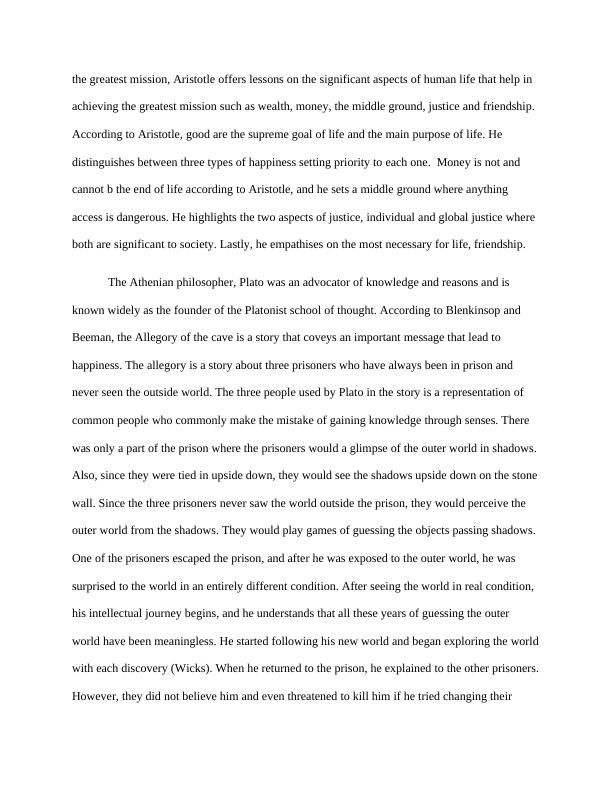Comparison of Aristotle and Plato's Works: Nicomachean Ethics and The Allegory of the Cave
5 Pages1310 Words73 Views
Added on 2023-01-13
About This Document
This paper compares and contrasts the works of Aristotle and Plato, specifically their famous works Nicomachean Ethics and The Allegory of the Cave. It discusses the main ideas presented by both philosophers and explores their different approaches to achieving happiness and enlightenment. The significance of virtues, ethics, and philosophical reasoning in leading a happy life is emphasized.
Comparison of Aristotle and Plato's Works: Nicomachean Ethics and The Allegory of the Cave
Added on 2023-01-13
ShareRelated Documents
End of preview
Want to access all the pages? Upload your documents or become a member.
Comparison of Plato and Aristotle's Works: The Allegory of the Cave and Nicomachean Ethics
|5
|1436
|313
Comparison and Contrast of Plato and Aristotle: The Allegory of the Cave and Nicomachean Ethics
|5
|1648
|34
The Power of Looking for Reasonable People
|5
|1322
|88
Aristotle's Nicomachean Ethics: An Ethical System or Not?
|4
|959
|69
Philosophy Of Ethics docx.
|7
|1531
|26
THE PHILOSOPHY ASSIGNMENT.
|6
|1231
|44


